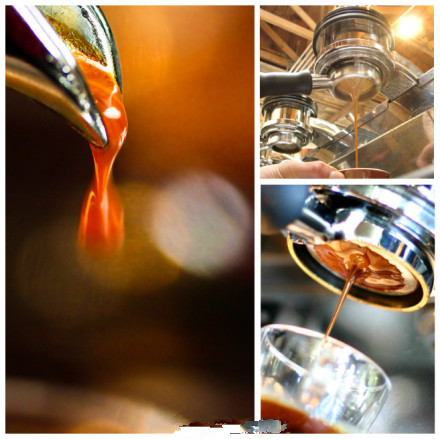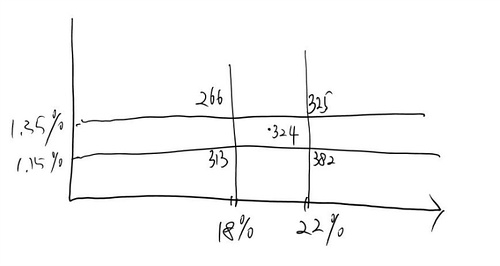Common problems and solutions in making espresso
If you work in a coffee shop, you should always be on guard against emergencies. The slightest thing can make your day very bad. This may be the general rule of the catering industry. As a barista, this little thing is likely to be a cup of coffee that failed to make, or a question asked by a customer that you can't answer. Today, let's share the problems and emergencies that may be encountered in making espresso, as well as the corresponding solutions.

Make espresso
First, check the roasting date of the coffee beans. If it lasts for more than three weeks, the mellowness of the coffee will be greatly reduced. Second, check the speed of the current. If the current is too slow, the coffee will become greasy and sharp. Remember, the coarser the coffee powder, the faster the water flow; the finer the grinding, the slower the flow.
At the same time, you should also pay attention to the water output of the coffee machine. Remember, espresso goes through three color changes when it comes out of the coffee machine. If the coffee maker stops coming out of the water after the second color change, you should carefully adjust the amount of water out of the coffee machine.
Finally, you need to check the temperature and pressure of the coffee machine. Most of the coffee machines we use today have temperature and pressure gauges on them. The steam pressure of the coffee machine should be controlled between 1-1.5bar (bar), and the pressure of the boiler should reach 9 bar (bar) when making coffee. Remember, never check the pressure gauge during off-working hours, as the values at that time do not have any reference value.
Coffee oil (Crema)
Condition 1: the oil blisters are big and the persistence is not strong.
If this happens, the first thing you need to do is check the roasting date of the coffee beans. Coffee beans produce a certain amount of nitrogen dioxide after roasting. If the coffee beans are just roasted, the coffee oil will be blistered and will not last long. What you need to do is to rest the coffee beans so that the gas is fully released so that the coffee oil will last longer. But if you sit for too long, more than 21 days, the taste of coffee oil will become stale. In addition, you should note that as the coffee beans continue to release gas, the taste of the coffee beans will change.
Condition 2: there is no coffee oil in the coffee.
This may be because the coffee grease disappears too fast. If this is the case, please refer to the "situation one" section. But if there is no coffee oil at all, it may be because your coffee has gone bad. Therefore, you must make sure to use your coffee beans within 21 days after baking.
At the same time, you should consider the storage conditions of coffee. Remember, coffee must be kept in a cold and dry place, never in contact with heat sources or in the refrigerator, causing the coffee to deteriorate faster.
If you are using a Synesso or Expobar coffee machine, you need to check to see if the water temperature is correct when making coffee. Take Synesso as an example, the coffee machine has a "Black Element" switch. If you accidentally run into the coffee maker while cleaning it, you need to turn it to the left and put it back in the right position.
Finally, you need to make sure that there is no extra residue at the bottom of your coffee cup!
Flow bifurcation
Remember, in the standard coffee making process, water must flow evenly through the coffee powder under pressure, so as to ensure the full fusion of the water and the coffee powder. If the water flow bifurcates, it means that the contact between the water and the coffee powder is not enough, and the water flows from the place where the coffee powder is least. To test whether the coffee extraction is uniform, you can use Naked Portafilter (a bottomless coffee handle that makes it easy to observe the flow of water).
To ensure that the contact between the water and the coffee powder is uniform enough, you need to do the following. First, you should make sure that the amount of coffee powder is accurate and that the pressed powder is solid but not hard. Second, the coffee handle must be kept dry before making coffee. The wet handle will cause water to flow easily through the coffee powder. Third, the strength of the powder must be uniform and accurate, if the pressure is too small or uneven, it will lead to incomplete extraction.
Finally, I would like to remind you not to knock on the edge of the handle. Tapping on the edges will only make pressed powder look better, but it will never make the coffee taste better. If you hit too hard, you will break the pressed powder, causing the water to flow through the cracks.
The current changes color too fast.
If the current changes color too fast, the taste of the coffee will become thinner and sweeter, and the overall taste of the coffee will be bitter and earthy. Spoiled coffee beans can also cause the water to change color too quickly, so you need to check the roasting date of the coffee again. In addition, too fast water can also lead to early discoloration. At the same time, you need to check if there are bifurcations. If so, please refer to the "flow bifurcation" section. Finally, check the temperature of the water.
Taste sharp or bitter
First of all, you still need to make sure that the coffee beans are roasted and check that the coffee beans have expired. Second, you need to check that the flow and color changes are accurate. The flow of water too fast or too slow can cause the coffee to be too bitter. Finally, check whether the water temperature is normal.
The taste is too sour
One of the reasons why coffee is too sour is that coffee beans are not fully vented. Let the coffee sit for a few days, but no more than three weeks. In addition, you still have to check whether the water temperature is normal.
Thus it can be seen that most of the problems encountered in the production of espresso can be avoided by ensuring coffee freshness, suitable storage conditions and precise operation. Of course, the quality of the coffee machine itself is also very important. You need a coffee machine with constant temperature and multiple boiler systems. There is usually a temperature change in a single-boiler coffee machine, resulting in a variable taste. The stability of the multi-boiler coffee machine is stronger, which can ensure the constant water temperature.
But if none of the above methods work, contact your local coffee expert or coffee machine repairman. The above methods are suitable for most common problems, but if you encounter too many problems or are difficult to solve, you should consider finding a coffee machine repairman to help you test the coffee machine and bean grinder. In any case, we all have the same dream of making the perfect espresso.
Important Notice :
前街咖啡 FrontStreet Coffee has moved to new addredd:
FrontStreet Coffee Address: 315,Donghua East Road,GuangZhou
Tel:020 38364473
- Prev

General knowledge on the concept of Powder-Water ratio of individual Coffee
The horizontal axis is the extraction rate, the vertical axis is the concentration, assuming that the coffee powder is 20g, then the coffee liquid obtained when the concentration is 1.35% within the gold cup and the extraction rate is 18%. The coffee liquid obtained when the extraction rate is 1.35%, 1.35%, 266g, 1.35%, 1.35%, and the extraction rate is increased to 22%. The coffee liquid is 20, 22%, 1.35%, and 325g. The extraction rate will remain 22%. The constant concentration will be 1.15%. The liquid of coffee is 20% 22% Coffee 1.1.
- Next

Six prerequisites for making perfect coffee to buy high-quality coffee beans
We already know the golden ratio of coffee with perfect taste. So, what is the premise of making perfect coffee? 1. Buy high-quality coffee beans-it is best to choose whole beans rather than ground coffee powder;-although high-quality coffee can be preserved for a year after roasting, most coffee beans reach the strongest aroma in a few days after roasting, and then the aroma of coffee slowly fades, so the most
Related
- What is the meaning of lactic acid fermentation with coffee bean treatment?
- How to judge the state of foam by sound?
- How does the latte pull out the unicorn pattern? Come to get for a little trick to improve the flower pull!
- Will flower pulling affect the taste of the latte?
- Do you know the history of coffee?
- The difference between honey treatment and sun washing what is raisin honey treatment?
- What kind of milk can a novice use to make coffee foam to keep the foam longer? The correct method and skills of milking tutorial sharing
- Why do washed coffee beans taste sour? Flavor characteristics of washed Coffee
- Introduction to the skill of how to practice the size and height of water injection around the circle of hand-brewed coffee
- How do beginners practice coffee flower drawing from scratch?

